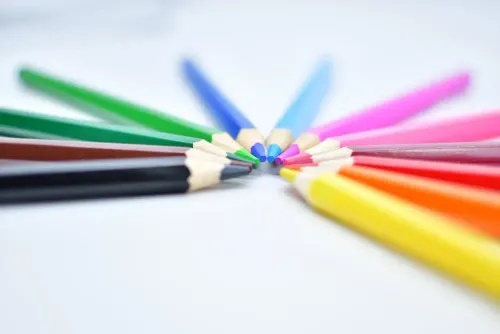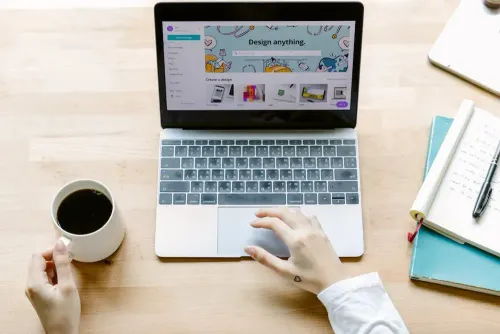Aesthetics play a pivotal role in capturing and retaining readers' attention. Not many people associate Comic Sans with 'classy'. While visual elements such as images and layouts are undoubtedly crucial, typography often emerges as an unsung hero in the world of blog design. The careful selection and arrangement of fonts can transform a blog's appearance, readability, and overall user experience. Let's explore how the right choice of fonts can elevate your blogging game to new level.
The Power of First Impressions
Imagine stumbling upon a blog with a cluttered, haphazard arrangement of fonts. Chances are, you'd quickly lose interest and move on to something more visually pleasing. Typography is the first element readers encounter upon landing on a blog. The choice of fonts, their size, and spacing set the tone for the entire reading experience.
Clean and consistent typography suggests professionalism and thoughtfulness. On the other hand, an inconsistent mishmash of fonts can signal a lack of attention to detail and diminish the credibility of your content. Remember, your blog is a reflection of your brand, and the right typography can help you make a positive first impression.
Enhancing Readability
The ultimate goal of any blog is to communicate ideas effectively. Typography plays a pivotal role in achieving this goal by enhancing readability. While creativity is important, readability should never be sacrificed at its altar. When selecting fonts, prioritize legibility over novelty.
The right font choice can make a significant difference in how long readers stay engaged with your content. Serif fonts, such as Times New Roman, are often favored for their traditional and formal appearance, making them suitable for longer, more informative blog posts. On the other hand, sans-serif fonts like Arial or Helvetica are known for their modern and clean look, making them a great choice for shorter, punchier articles.
Additionally, font size and line spacing also contribute to readability. Experiment with different sizes and spacing to find the sweet spot that makes your content easy on the eyes. A well-structured hierarchy with appropriate headings and subheadings, along with consistent font choices, ensures that readers can quickly scan your content and grasp the main points.
Setting the Tone and Mood
Have you walked by a restaurant and already figured out its expensive by the name of it? The typography can be an influence in you thinking that! Typography is more than just words on a screen; it's a visual language that can convey emotions, personality, and tone. Different fonts evoke different feelings. For instance, a playful handwritten font might be perfect for a blog about creative DIY projects, while a sleek and minimalistic font could enhance the sophistication of a fashion blog.
When choosing fonts, think about the personality you want your blog to exude. Are you aiming for a professional and informative tone, or do you want to come across as approachable and friendly? The right typography can communicate these nuances before readers even delve into the content.
Establishing Brand Identity
Consistency is key when it comes to establishing a strong brand identity, and typography is a critical component of this consistency. The fonts you choose for your blog can become synonymous with your brand. Consider some of the most iconic brands – Coca-Cola, Disney, and Apple. The fonts they use are instantly recognizable and play a significant role in their branding strategies.
By selecting a consistent set of fonts across your blog, you can create a cohesive and memorable brand identity. This identity extends beyond your blog to social media, promotional materials, and more, reinforcing your blog's unique voice and message.
The Art of Pairing Fonts
While consistency is crucial, it doesn't mean you're limited to a single font. In fact, combining fonts thoughtfully can enhance visual interest and hierarchy in your blog's design. However, the art of pairing fonts requires careful consideration.
When combining fonts, opt for contrast rather than similarity. Choose fonts that have distinct characteristics – pairing a serif font with a sans-serif font, for example. This contrast helps establish a clear visual hierarchy between headings, subheadings, and body text. Experiment with different combinations to find the ones that complement each other while maintaining readability.
Responsive Design and Typography
Where readers access content on a variety of devices and screen sizes, responsive design is paramount. Typography, too, must adapt to these changing dimensions. A font that looks great on a large desktop screen might become illegible on a smartphone.
Responsive typography involves selecting fonts that maintain their legibility and visual appeal across different devices. This might mean using larger font sizes for mobile devices or opting for fonts with improved readability on smaller screens. Additionally, consider line lengths – longer lines of text can be challenging to read on narrow screens, so adjust line spacing or font sizes accordingly.
Tools for Choosing and Using Typography
Choosing the right typography for your blog can be a daunting task, but thankfully, there are numerous tools available to help simplify the process. Websites like Google Fonts offer a wide range of free fonts that are web-safe and easily accessible for bloggers. These fonts can be integrated into your blog's design seamlessly, ensuring a consistent experience for your readers.
Typography also extends to font colors and backgrounds. Contrast between text and background is essential for readability. Tools such as contrast checkers can help you determine whether your chosen color scheme meets accessibility standards.
Typography, often overshadowed by other design elements, plays a critical role in shaping a blog's visual appeal, readability, and overall user experience. From making a strong first impression to conveying the right tone, typography is a versatile tool that every blogger should harness.
When selecting fonts, prioritise readability and consistency, but don't shy away from experimenting with combinations that reflect your blog's personality. Remember that responsive design is essential to ensure your typography remains effective across various devices.
As you continue your blogging journey, keep in mind that the art of typography is a dynamic and ongoing process. Regularly revisit and assess your font choices to ensure they align with your evolving brand identity and readers' preferences. By mastering the art of typography, you can elevate your blog aesthetics and create a lasting impact on your readers.






